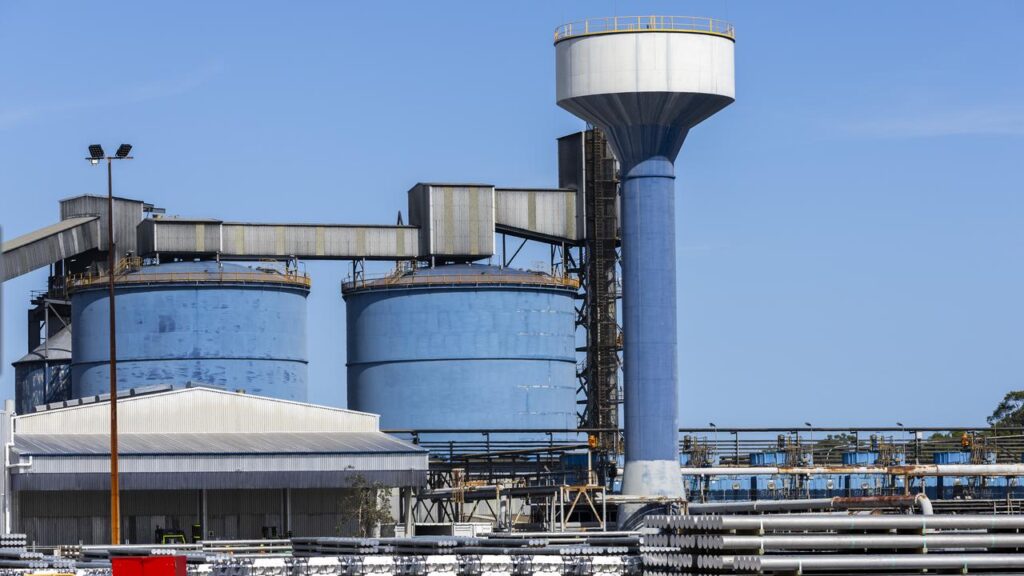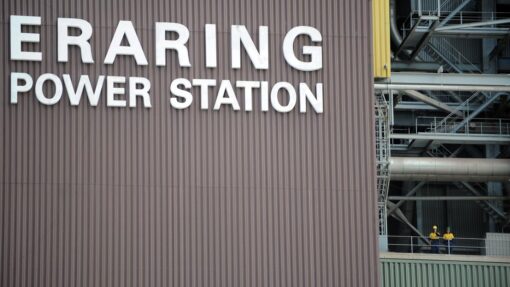‘We need energy’: leader touts gas to save smelter jobs
Alex Mitchell and Farid Farid |

A premier could use compulsory acquisition powers to increase gas supplies for industry and help secure the future of the nation’s biggest aluminium smelter.
Federal and NSW government leaders have been scrambling to keep the Tomago Aluminium facility running, with a bailout reportedly worth more than $1 billion on offer.
The operators of the Hunter Valley smelter, which is majority-owned by mining giant Rio Tinto, said high energy costs had forced the company to consider ending operations when its electricity supply contracts expired in 2028.

In an address to an Australian Workers’ Union conference in western Sydney, Premier Chris Minns said he was determined to keep Tomago open, linking its future to a controversial, multibillion-dollar natural gas project.
“We can’t sit around waiting for Rio to make an investment decision or to telegraph their next move in for 2028,” he told hundreds of delegates
“It’s clear that when it comes to manufacturing in the Hunter and in New South Wales, we need energy.
“I want to send a clear message today that we need the Narrabri gas field to produce energy as soon as possible.”

The Santos-owned Narrabri gas project in northwest NSW is slated to supply up to half of the state’s gas needs, but it is yet to begin producing the fossil fuel after being mired in legal battles for more than a decade.
Mr Minns cautioned landholders that his government would consider using compulsory acquisition powers if anyone stood in the way of a planned pipeline to ensure gas from the field could flow to industry.
But Oliver Yates, a clean energy consultant, said leaning heavily on gas to prop up industry was not a feasible solution and renewable energy needed to be seriously considered as the permanent fix.
“If you’re going to burn gas to make electricity, it’ll be vastly more expensive than renewables, let alone the emissions you get from it,” he told AAP.
“Gas doesn’t solve your problem at Tomago.”
The former head of the Clean Energy Finance Corporation also slammed government bailouts as “a band-aid for the moment.”
He suggested the state government act as an intermediary between Tomago and renewable energy providers to build the required multibillion-dollar facilities, which would be more effective in the long run to drive down power prices.
Electricity makes up 40 per cent of operating costs at Tomago, which began production in 1983 and delivers up to 590,000 tonnes of aluminium a year.
The smelter is the single largest electricity user in the nation and consumes about 10 per cent of power supplies in NSW.

Electrical Trades Union NSW/ACT secretary Allen Hicks described the looming shutdown as “a gut punch for the Hunter.”
“Thousands of families are rightfully concerned about what the future holds,” he said, adding the smelter needed a renewable energy solution that meant it wasn’t dependent on high electricity prices.
“Workers and communities shouldn’t have to pay the price for corporate greed and political failure,” Mr Hicks added.
Energy Minister Chris Bowen said he was frustrated the parties had not yet reached an arrangement but added the government would continue to engage constructively with the firm.
Its struggles follow bailouts for several other smelters and refineries, including a multibillion-dollar package to save South Australia’s Whyalla steelworks.
Swiss mining giant Glencore in October received a $600 million injection as part of a joint federal and state deal to keep Queensland’s Mount Isa copper smelter and Townsville copper refinery open, securing about 600 jobs.
Tasmania Industry Minister Felix Ellis pointed to the possible bailout for Tomago as evidence the federal Labor government had ignored calls from his Liberal-run state for a similar deal.
Bell Bay Aluminium in Tasmania, which is also owned by Rio Tinto, faces a potential shutdown as a 10-year deal with Hydro Tasmania nears its December 31 deadline.
AAP


